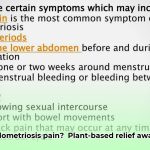Tight inner thighs can be a source of discomfort and limited mobility for many. This guide provides safe and effective adductor stretches to improve flexibility, relieve pain, and prevent injuries. Learn step-by-step techniques with modifications suitable for all fitness levels, and discover how to feel looser and more comfortable. For more detailed information, check out this great resource.
Adductor Stretches: Your Guide to Hip Flexibility
Tight adductor muscles on your inner thighs can lead to pain, stiffness, and injuries, impacting daily activities and workouts. Regular stretching improves hip mobility, boosts performance, and enhances overall well-being. This guide shows you how to give your adductors the attention they deserve. Improve your overall hip health and range of motion with these simple exercises.
Understanding Your Inner Thighs: The Adductors
The adductor muscle group, located on the inner thigh, comprises the adductor longus, adductor brevis, adductor magnus, gracilis, and pectineus. These muscles are crucial for hip support and various movements, from walking and running to squats and lunges. Tightness restricts range of motion and contributes to discomfort in the groin, hips, and lower back. Proactive stretching is key to preventing problems and promoting long-term muscle health. Understanding their function is key to performing the correct stretches.
Why Bother Stretching Your Adductors? The Big Benefits
Stretching your adductors offers benefits beyond feeling better. Improved flexibility reduces the risk of strains and tears, which is especially important for athletes involved in sports requiring quick lateral movements, such as soccer, hockey, and basketball. Increased hip mobility makes everyday activities easier, such as getting in and out of chairs, climbing stairs, and walking. With regular stretching you will gain more flexibility, prevent possible injuries to your adductor muscles, improve balance, and enhance athletic performance. Flexibility in this area can also aid in deeper squats and improved stability.
Top Adductor Stretches: A Step-by-Step Guide
Remember, consistency is more important than intensity. Perform gentle stretches, focusing on proper form to avoid strain, and stop if you feel any sharp pain. Consider using yoga straps for additional support. It’s also recommended to warm up the adductor muscles before stretching to reduce the risk of injury. This can be achieved through light cardio, such as walking or jogging, or dynamic stretches, like leg swings.
1. The Butterfly Stretch: A Gentle Start
- Step 1: Sit comfortably on the floor with your feet together, soles touching.
- Step 2: Gently press down on your knees with your elbows, feeling a stretch in your inner thighs. Avoid bouncing your knees.
- Step 3: To deepen the stretch, gently lean forward from your hips, keeping your back straight.
- Step 4: Hold this position for 30 seconds, breathing deeply, which can deepen the stretch as your muscles relax.
2. Wide-Legged Forward Fold: A Deeper Dive
- Step 1: Stand with your feet wider than shoulder-width apart, toes slightly pointing outwards. The wider the stance, the greater the stretch.
- Step 2: Keeping your back straight, engage your core and bend forward from your hips, allowing your head to hang naturally.
- Step 3: Feel the stretch in your inner thighs and groin, holding for 30 seconds while focusing on your breath. Bend your knees slightly if needed.
- Modification: Use blocks under your hands for support if you cannot reach the floor.
3. Lying Inner Thigh Stretch: Comfort and Adductor Relief
- Step 1: Lie on your back with your knees bent and feet flat on the floor.
- Step 2: Gently let your knees fall out to the sides, feeling the stretch in your inner thighs.
- Step 3: Try to keep your lower back pressed to the floor and hold for 30 seconds.
- Modification: Place pillows or cushions under your knees for added support if the stretch is too intense.
4. Standing Adductor Stretch: One Leg at a Time
- Step 1: Stand with your feet wider than hip-width apart, toes slightly outward.
- Step 2: Bend one knee and slowly lower your hips towards the ground, keeping your other leg straight. Ensure the bent knee stays aligned over your ankle.
- Step 3: Feel the stretch in the inner thigh of the straight leg. Hold for 30 seconds, then repeat on the other side.
- Modification: Use a wall or chair for balance if needed.
5. The Frog Stretch: A More Advanced Pose for Flexibility
- Step 1: Begin on your hands and knees.
- Step 2: Slowly widen your knees out to the sides, keeping your feet together.
- Step 3: Gently lower your hips toward the floor, only going as far as comfortable. Hold for 30 seconds.
- Caution: Avoid this stretch if you have knee pain or groin injuries.
6. Side Lunge:
- Step 1: Stand with your feet hip-width apart.
- Step 2: Take a large step to the side with one leg, bending that knee while keeping the other leg straight.
- Step 3: Keep your back straight and your weight over your bent knee.
- Step 4: Hold for 30 seconds, then return to the starting position and repeat on the other side.
Tips for Success: Making Stretching a Habit
- Consistency is Key: Even a few minutes of stretching daily is more effective than infrequent, intense sessions. Aim to incorporate these stretches into your daily routine, such as after a workout or before bed.
- Listen to Your Body: Avoid pushing yourself beyond your comfort zone; a gentle stretch is more effective and safer than forcing it. Stop immediately if you feel any sharp or stabbing pain.
- Breathe Deeply: Controlled breathing enhances relaxation and deepens the stretch. Inhale deeply before starting the stretch and exhale slowly as you hold the position.
- Warm Up First: Light cardio or dynamic stretches prepares your muscles for stretching, preventing injury. A five-minute walk or some leg swings can be sufficient.
- Stay Hydrated: Water helps keep your muscles pliable. Proper hydration can enhance flexibility and reduce the risk of muscle cramps.
Addressing Your Concerns: Common Questions
Q: I have groin pain. Can I still do adductor stretches?
A: Gentle stretching might help, but if the pain persists or worsens, consult a doctor or physical therapist for proper diagnosis and recommendations. Self-treating could worsen the problem. Avoid stretches that cause or increase pain.
Q: How often should I stretch my adductors?
A: Aim for daily stretching, holding each pose for at least 30 seconds. Consistency is vital for seeing noticeable improvements in flexibility and reducing tightness. You can also stretch multiple times throughout the day if you feel tightness returning.
Q: When is the best time to stretch my adductors?
A: Stretching after a workout or after a warm bath can be particularly effective, as your muscles are already warm and more pliable. However, you can stretch anytime you feel tightness or stiffness.
The Bottom Line: Embrace Flexibility
Incorporating adductor stretches into your routine offers improved hip mobility, reduced pain, increased athletic performance, and enhanced overall well-being. Prioritize proper form, listen to your body, and be patient. Greater flexibility is a gradual process with worthwhile rewards.
How to Prevent Adductor Muscle Injuries Through Stretching
Adductor muscle strains are common, impacting athletes and sedentary individuals. Prevention hinges on targeted stretching, strengthening, and addressing muscle imbalances. Gradual progression in rehabilitation exercises is key, in addition to proper warm-up and cool-down routines. Address underlying biomechanical factors for long-term prevention.
Understanding Your Adductors
Adductor muscles on the inner thighs assist with movements like bringing your legs together. They also play a crucial role in stabilizing the pelvis and supporting hip joint function. Tight adductors increase the risk of strains and pulls, making preventative stretching vital. It’s like a rubber band—overstretched, it snaps; too tight, it’s brittle. Optimal adductor health is about finding the right balance.
Why Stretching Matters
Regular stretching keeps your adductors supple, improving blood flow and reducing stiffness and soreness. Stretching increases range of motion, making everyday activities easier. Flexibility prevents painful groin injuries, which can sideline athletes and disrupt daily life. Dynamic stretching before exercise prepares the muscles for activity, while static stretching after exercise helps them recover.
Effective Adductor Stretches: A Step-by-Step Guide
Remember to breathe deeply throughout each stretch and never push through pain.
1. Butterfly Stretch:
- Sit with the soles of your feet together.
- Gently press down on your knees using your elbows.
- Hold for 30 seconds, feeling the stretch in your inner thighs.
2. Wide Leg Forward Fold:
- Stand with your legs wider than shoulder-width apart.
- Slowly bend forward, keeping your back straight.
- Hold for 30 seconds, feeling the stretch in your inner thighs and groin.
3. Lying Inner Thigh Stretch:
- Lie on your back with knees bent, let your knees gently fall to one side.
- Use the momentum of your
- Plant-based Diet Colitis Remission: Success Stories - December 18, 2025
- Plant Based Diet Breast Cancer: Research-Based Benefits - December 16, 2025
- Plant-Based Diet Ulcerative Colitis Remission: Proven Benefits - December 15, 2025










